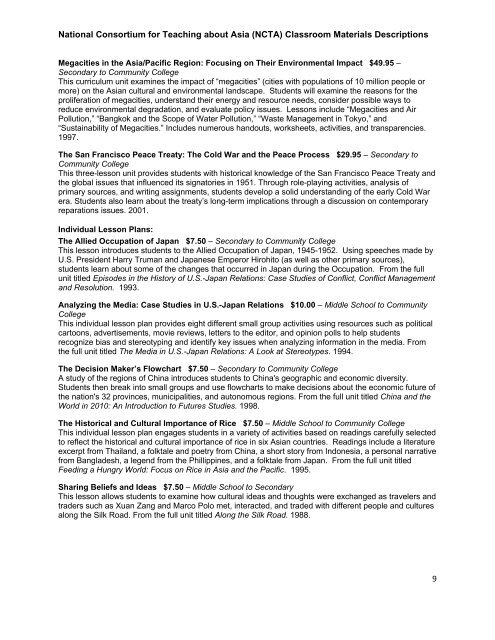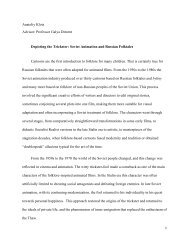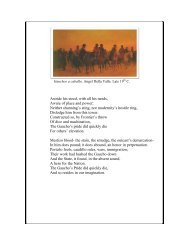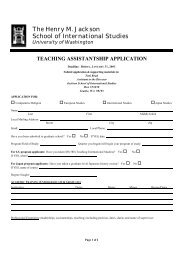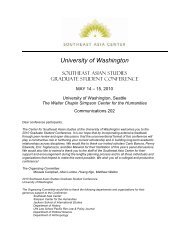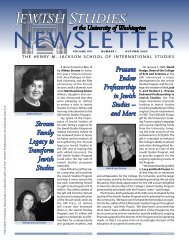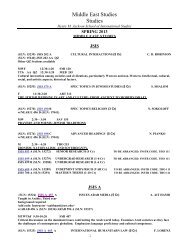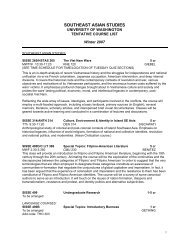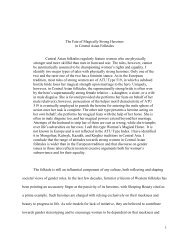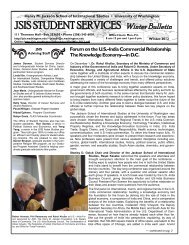Cobblestone Publishing Kamishibai for Kids - Jackson School of ...
Cobblestone Publishing Kamishibai for Kids - Jackson School of ...
Cobblestone Publishing Kamishibai for Kids - Jackson School of ...
Create successful ePaper yourself
Turn your PDF publications into a flip-book with our unique Google optimized e-Paper software.
National Consortium <strong>for</strong> Teaching about Asia (NCTA) Classroom Materials Descriptions<br />
Megacities in the Asia/Pacific Region: Focusing on Their Environmental Impact $49.95 –<br />
Secondary to Community College<br />
This curriculum unit examines the impact <strong>of</strong> “megacities” (cities with populations <strong>of</strong> 10 million people or<br />
more) on the Asian cultural and environmental landscape. Students will examine the reasons <strong>for</strong> the<br />
proliferation <strong>of</strong> megacities, understand their energy and resource needs, consider possible ways to<br />
reduce environmental degradation, and evaluate policy issues. Lessons include “Megacities and Air<br />
Pollution,” “Bangkok and the Scope <strong>of</strong> Water Pollution,” “Waste Management in Tokyo,” and<br />
“Sustainability <strong>of</strong> Megacities.” Includes numerous handouts, worksheets, activities, and transparencies.<br />
1997.<br />
The San Francisco Peace Treaty: The Cold War and the Peace Process $29.95 – Secondary to<br />
Community College<br />
This three-lesson unit provides students with historical knowledge <strong>of</strong> the San Francisco Peace Treaty and<br />
the global issues that influenced its signatories in 1951. Through role-playing activities, analysis <strong>of</strong><br />
primary sources, and writing assignments, students develop a solid understanding <strong>of</strong> the early Cold War<br />
era. Students also learn about the treaty’s long-term implications through a discussion on contemporary<br />
reparations issues. 2001.<br />
Individual Lesson Plans:<br />
The Allied Occupation <strong>of</strong> Japan $7.50 – Secondary to Community College<br />
This lesson introduces students to the Allied Occupation <strong>of</strong> Japan, 1945-1952. Using speeches made by<br />
U.S. President Harry Truman and Japanese Emperor Hirohito (as well as other primary sources),<br />
students learn about some <strong>of</strong> the changes that occurred in Japan during the Occupation. From the full<br />
unit titled Episodes in the History <strong>of</strong> U.S.-Japan Relations: Case Studies <strong>of</strong> Conflict, Conflict Management<br />
and Resolution. 1993.<br />
Analyzing the Media: Case Studies in U.S.-Japan Relations $10.00 – Middle <strong>School</strong> to Community<br />
College<br />
This individual lesson plan provides eight different small group activities using resources such as political<br />
cartoons, advertisements, movie reviews, letters to the editor, and opinion polls to help students<br />
recognize bias and stereotyping and identify key issues when analyzing in<strong>for</strong>mation in the media. From<br />
the full unit titled The Media in U.S.-Japan Relations: A Look at Stereotypes. 1994.<br />
The Decision Maker’s Flowchart $7.50 – Secondary to Community College<br />
A study <strong>of</strong> the regions <strong>of</strong> China introduces students to China's geographic and economic diversity.<br />
Students then break into small groups and use flowcharts to make decisions about the economic future <strong>of</strong><br />
the nation's 32 provinces, municipalities, and autonomous regions. From the full unit titled China and the<br />
World in 2010: An Introduction to Futures Studies. 1998.<br />
The Historical and Cultural Importance <strong>of</strong> Rice $7.50 – Middle <strong>School</strong> to Community College<br />
This individual lesson plan engages students in a variety <strong>of</strong> activities based on readings carefully selected<br />
to reflect the historical and cultural importance <strong>of</strong> rice in six Asian countries. Readings include a literature<br />
excerpt from Thailand, a folktale and poetry from China, a short story from Indonesia, a personal narrative<br />
from Bangladesh, a legend from the Phillippines, and a folktale from Japan. From the full unit titled<br />
Feeding a Hungry World: Focus on Rice in Asia and the Pacific. 1995.<br />
Sharing Beliefs and Ideas $7.50 – Middle <strong>School</strong> to Secondary<br />
This lesson allows students to examine how cultural ideas and thoughts were exchanged as travelers and<br />
traders such as Xuan Zang and Marco Polo met, interacted, and traded with different people and cultures<br />
along the Silk Road. From the full unit titled Along the Silk Road. 1988.<br />
9


